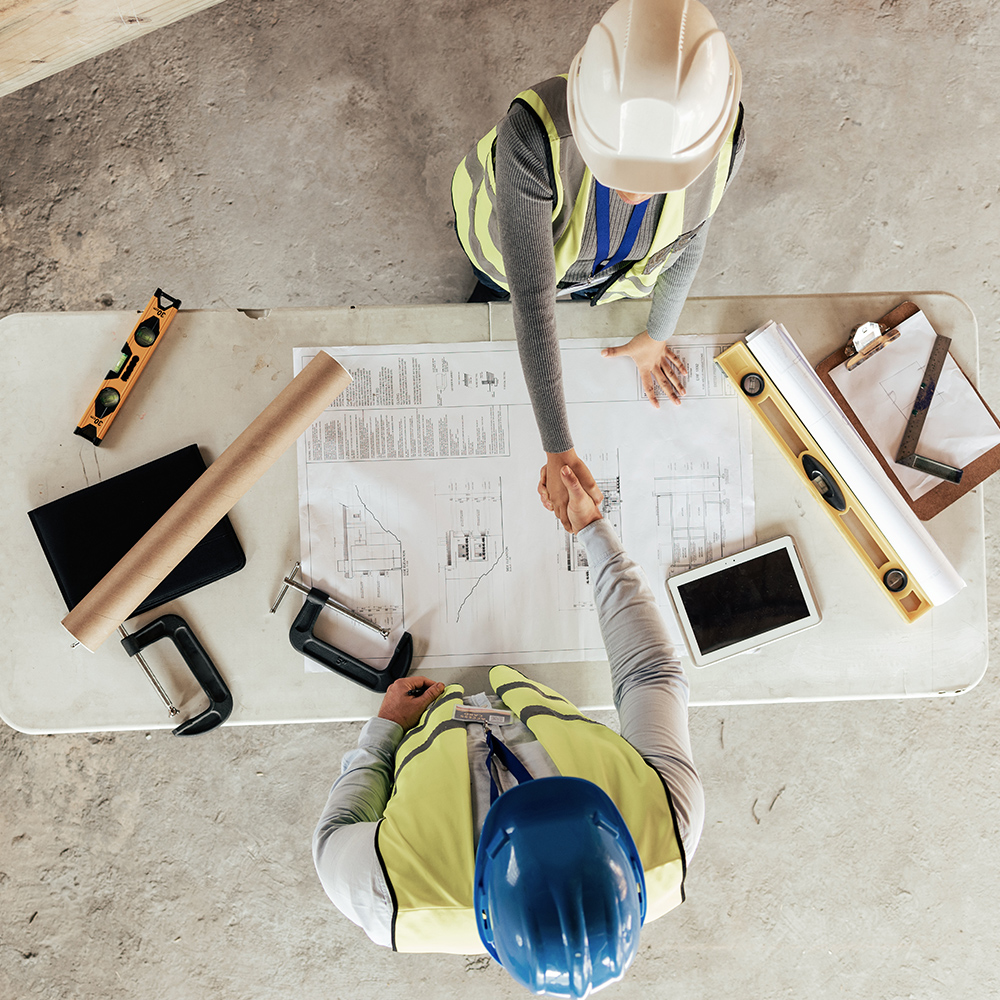
CERAMIC APPLICATION
CERAMIC APPLICATION

TECHNICAL DATA SHEET
SURFACE EXAMINATION AND SURFACE PREPARATION
> New surfaces: Surfaces (such as concrete, plaster, screed) must be sound and cured for 3-4 weeks. Materials that prevent adhesion such as mold release oil should be cleaned and surface smoothing should be done with TamirArt repair mortars on uneven sections.
> Old surfaces: In order for the application to be made on old surfaces to be healthy, the soundness of the surfaces should be carefully examined. If the surface, which is checked at regular intervals with a hammer, chisel or nail, is easily scraped, it should be scraped until a solid surface is reached, and broken, cracked and weak surfaces should be repaired with TamirArt repair mortars. Defects and non-balances on horizontal surfaces should be corrected with Master10 leveling screed. In addition, mortar, oil, dirt, etc. on the surface before application. Residues should be completely cleaned as they will adversely affect the adhesion.
> Absorbent surfaces: In applications on surfaces with high water absorption (gypsum block, gypsum board, gas concrete, wood, etc.), the absorbency of the surface is removed with Kalekim Astar so that the water in the mortar does not disappear quickly and causes poor adhesion.
> Ceramic coated surfaces: If ceramic will be applied again on the existing coating material; first check the coating with a hammer. If there are unsound, weakly adhered ceramics, stick them or remove them and fill the gap with TamirArt repair mortars.
> Painted surfaces: If ceramic coating is to be applied on the painted surface, the surface should be checked first. If there are loose and swollen areas, they should be scraped. It is recommended to sand or notch the surface in order to increase the adhesion strength of the adhesive.
> Wooden-OSB surfaces: Unstable parts should be fixed, broken and broken ones should be replaced. The surface must be primed with Kalekim Astar. In order for the application to be long-lasting, the bonding process should be done with a net or after the TamirArt (mesh) repair mortar application, the bonding should be done. Along with these, it is extremely important to pay attention to the environmental conditions.
Three international methods are used in the application of adhesive mortars. The main purpose here is to cover the entire back surface of the coating plate with mortar to ensure that there are no gaps. The type of comb to be used in these methods is also complementary in this regard.
1. Carding Method
This method is the most common method used for bonding small and medium sized coating materials in thin bed mortars.
After the adhesive mortar is spread by pressing strongly with a flat hand trowel on the surface to be coated, it is combed with a notched trowel with a suitable tooth size selected according to the tile size, with a grip angle of 45° to 60°. After these processes, the coating material is adhered to the notched surface by pressing strongly. In addition, in order to increase the better spreading and adhesion of the mortar behind the coating material, the coating material is fixed and leveled with the help of a rubber or wooden hammer.
2. Lubrication Method
This method is a method used for bonding small and medium sized coating materials in thin bed mortars. Adhesive mortar is applied in layers on the back surface of the coating material with a flat hand trowel so that there are no gaps in the corners and edges, and it is adhered to the surface. Then, the coating material is fixed and leveled with the help of a rubber or wooden hammer in order to spread the mortar to the back of the coating material better and to increase the adhesion.
3. Combined Method
This method is a method used in medium bed mortars. This method should be used for bonding large sized coating materials, on floors subject to heavy pedestrian and load traffic, in cold climates, and exterior applications. Adhesive mortar is applied to the floor with a comb, as in the carding method, and is applied as a thin layer behind the coating material, as in the lubrication method. After these processes, the coating material is fixed and leveled with the help of a rubber or wooden hammer in order to spread the mortar to the back of the coating material and increase the adhesion.
